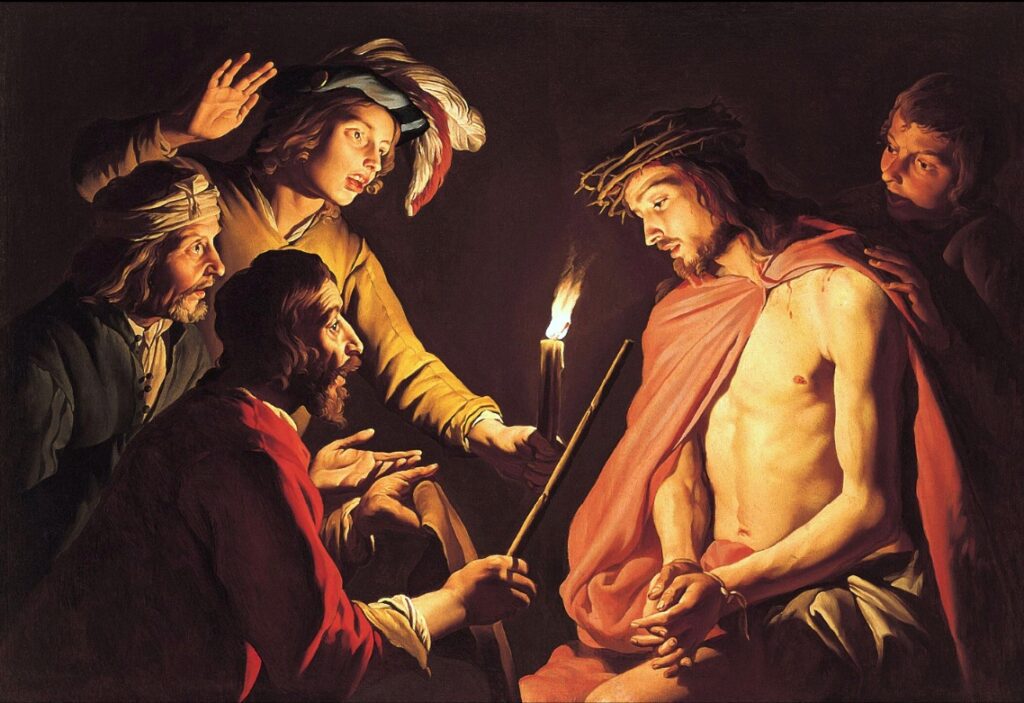A friend of mine is a Franciscan friar; when he was newly ordained, he felt woefully inadequate when he was asked to give a reflection to a conference of bishops. What could he say that they didn’t already know?
He sought the counsel of a very senior and highly revered friar, who paused, stared at him a moment, then slowly and deliberately said, “Preach Jesus. Always, preach Jesus.”
That simple wisdom guided the young priest through his ministry. Whenever he felt unqualified, whenever he didn’t know what to say, whenever he didn’t know where to start, he went back to the heart of the Gospel, to the centerpiece of evangelization – to the Kerygma.
The Kerygma is the story of Christ’s life, death, and resurrection. It is simple, profound, and always invites us to a deeper appreciation of, and relationship with, Our Lord. Kerygma is a Greek word that means “proclamation.” This proclamation specifically refers to the basics of the Gospel: the story of Christ living, dying, and rising from the dead.
Christ took on flesh and dwelled with us so that we might know and be close to him. He endured persecution and death for love of us. Christ claimed victory over death and sin through his resurrection. The Kerygma is the Good News, as well as a framework for evangelization. The three days of Triduum allow us to intentionally walk through the Kerygma and gain helpful insights into our approach to evangelization.
On Holy Thursday, Triduum begins at the feast of the Lord’s Supper, when Christ gives himself to us in the Eucharist. The Lord’s gift of closeness, giving himself to us intimately and personally, is a lesson in how we are called to evangelize. At that same meal, the Lord kneels before the disciples and cleans their feet in an act of humility and service. It is from these readings that we mark the institution of the priesthood and are reminded of the call to serve. Evangelization invites us to be close to those we serve and humbly serve those we encounter.
Good Friday teaches us that sacrifice is the ultimate expression of love and central to the Christian witness. Evangelization, in both big and small ways, calls us to lay down our lives – our wants, needs, and desires – for our neighbor.
This is particularly demonstrated in the witness of priests and grooms. Grooms traditionally wear black on their wedding day for the same reason clergy wear black daily: to remind them of their call to die to themselves for their beloved. Christ’s Passion and death provide a model of sacrificial love. While each of us is called to live this out in our primary vocation, we are also called to embody it in evangelization – loving our neighbor by putting their needs before our own.
Finally, on Holy Saturday, we are taught patience and trust as we hold vigil for Our Lord. Holy Saturday reminds us that there is hope even amid great fear, anguish, and death. It begins in darkness and concludes with the glorious light of Christ’s resurrection at Easter. “The light shines in the darkness, and the darkness has not overcome it” (Jn 1:5).
The women at the tomb are the first evangelists – running to share the good news of Christ’s resurrection. Evangelization calls us to patience, trust, and hope. It is because of the resurrection that evangelization is able to invite others to reconciliation with the Father and eternity with God.
The three days of Triduum teach us how to proclaim the Kerygma with our words and lives. The Triduum invites us to tell the story of the life, death, and resurrection of Christ through closeness, service, sacrifice, patience, trust, and hope.
It is our prayer that this Triduum would shape and guide us in how we carry out the call of Kerygmatic proclamation. Go, preach Jesus.
 Daniel Harms has worked for the Diocese of Richmond since 2012 and served as Associate Director for Marriage, Family, and Life Ministries since 2023. As a speaker and musician, Dan has presented to Catholic audiences in 46 states and seven countries. He and his family are parishioners at St. Edward the Confessor, Richmond.
Daniel Harms has worked for the Diocese of Richmond since 2012 and served as Associate Director for Marriage, Family, and Life Ministries since 2023. As a speaker and musician, Dan has presented to Catholic audiences in 46 states and seven countries. He and his family are parishioners at St. Edward the Confessor, Richmond.

